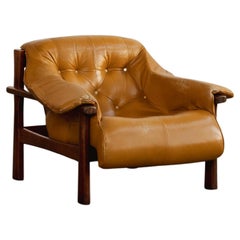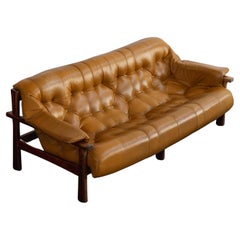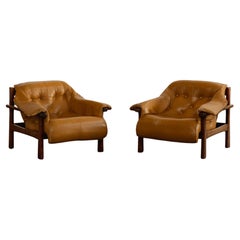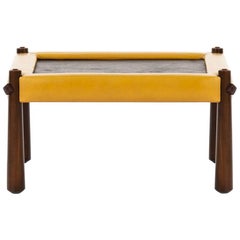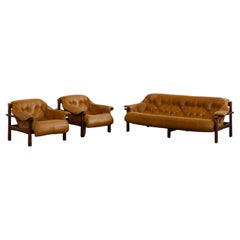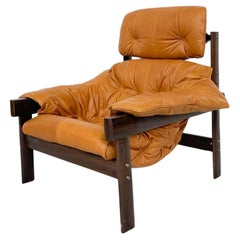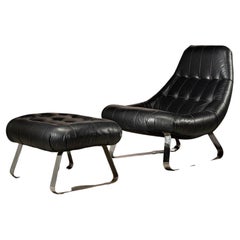Lafer Mp
Vintage 1970s Brazilian Post-Modern Armchairs
Leather, Wood
Vintage 1970s Brazilian Post-Modern Living Room Sets
Leather, Wood
Vintage 1970s Brazilian Post-Modern Armchairs
Leather, Wood
Vintage 1970s Brazilian Mid-Century Modern Coffee and Cocktail Tables
Slate
Vintage 1970s Brazilian Post-Modern Living Room Sets
Leather, Wood
Vintage 1960s Armchairs
Leather, Wood
Vintage 1960s Brazilian Mid-Century Modern Lounge Chairs
Suede, Rosewood
Vintage 1970s Brazilian Mid-Century Modern Sofas
Leather, Rosewood
Mid-20th Century Brazilian Mid-Century Modern Lounge Chairs
Stainless Steel
Vintage 1960s Brazilian Mid-Century Modern Armchairs
Metal
Vintage 1970s Brazilian Mid-Century Modern Sofas
Leather, Rosewood
Vintage 1960s Brazilian Mid-Century Modern Armchairs
Metal
Vintage 1970s Brazilian Mid-Century Modern Lounge Chairs
Leather, Jacaranda
Vintage 1970s Mid-Century Modern Furniture
Wood
Mid-20th Century Brazilian Mid-Century Modern Armchairs
Upholstery, Hardwood
Vintage 1960s Brazilian Mid-Century Modern Sofas
Leather, Upholstery, Hardwood
2010s American Mid-Century Modern Lounge Chairs
Leather, Walnut
Vintage 1960s Brazilian Mid-Century Modern Lounge Chairs
Leather, Upholstery, Hardwood
Vintage 1960s Brazilian Mid-Century Modern Sofas
Chrome
Mid-20th Century Brazilian Mid-Century Modern Sofas
Leather, Hardwood
Vintage 1970s Brazilian Mid-Century Modern Chairs
Leather, Wood
Vintage 1970s Brazilian Mid-Century Modern Sofas
Leather, Rosewood
Mid-20th Century Brazilian Mid-Century Modern Armchairs
Upholstery, Hardwood
Mid-20th Century Brazilian Mid-Century Modern Lounge Chairs
Metal
Vintage 1960s Brazilian Mid-Century Modern Lounge Chairs
Wood
Vintage 1960s Brazilian Mid-Century Modern Sofas
Leather, Upholstery, Hardwood
Vintage 1970s Brazilian Mid-Century Modern Benches
Stainless Steel
Vintage 1970s Loveseats
Suede, Jacaranda
Vintage 1970s Brazilian Modern Sofas
Suede, Rosewood
Vintage 1970s Brazilian Mid-Century Modern Lounge Chairs
Upholstery, Wood, Rosewood
Vintage 1970s Brazilian Post-Modern Lounge Chairs
Steel, Chrome
Mid-20th Century Brazilian Mid-Century Modern Armchairs
Leather, Hardwood
Mid-20th Century Brazilian Mid-Century Modern Armchairs
Leather, Hardwood
Mid-20th Century Brazilian Mid-Century Modern Side Tables
Jacaranda
Vintage 1970s Unknown Mid-Century Modern Living Room Sets
Rosewood
Vintage 1960s Brazilian Mid-Century Modern Sofas
Leather, Rosewood
20th Century Brazilian Mid-Century Modern Sofas
Rosewood, Leather
2010s American Mid-Century Modern Lounge Chairs
Leather, Walnut
Late 20th Century Brazilian Mid-Century Modern Sofas
Faux Leather, Hardwood
Vintage 1970s Mid-Century Modern Lounge Chairs
Chrome
Vintage 1960s Brazilian Armchairs
Leather, Wood
Vintage 1970s Brazilian Mid-Century Modern Lounge Chairs
Leather, Cocobolo
Late 20th Century Brazilian Armchairs
Wood
Vintage 1970s Brazilian Mid-Century Modern Chairs
Leather
Vintage 1970s Brazilian Mid-Century Modern Lounge Chairs
Leather, Wood
Mid-20th Century German Mid-Century Modern Lounge Chairs
Leather
Vintage 1970s Brazilian Mid-Century Modern Coffee and Cocktail Tables
Glass, Smoked Glass, Wood
Mid-20th Century Brazilian Mid-Century Modern Sofas
Leather, Hardwood
Mid-20th Century Brazilian Mid-Century Modern Armchairs
Chrome
Vintage 1970s Brazilian Mid-Century Modern Sofas
Leather, Fiberglass, Rosewood
Mid-20th Century Brazilian Mid-Century Modern Armchairs
Leather, Hardwood
Vintage 1970s Brazilian Mid-Century Modern Armchairs
Leather, Cedar
Mid-20th Century Brazilian Mid-Century Modern Coffee and Cocktail Tables
Glass, Hardwood
Mid-20th Century Brazilian Mid-Century Modern Side Tables
Marble
Mid-20th Century Brazilian Mid-Century Modern Coffee and Cocktail Tables
Wood
Mid-20th Century Brazilian Mid-Century Modern Coffee and Cocktail Tables
Iron
Vintage 1970s Brazilian Mid-Century Modern Armchairs
Leather, Wood
Vintage 1970s Brazilian Mid-Century Modern Armchairs
Leather, Foam, Wood
- 1
Lafer Mp For Sale on 1stDibs
How Much is a Lafer Mp?
Percival Lafer for sale on 1stDibs
When it comes to mid-century furniture, the innovative work of the Brazilian Modernists has often been overlooked, including the designs of prolific maker Percival Lafer. Lafer studied architecture at São Paulo’s Universidade Mackenzie. After he graduated, his father passed away suddenly, leaving a furniture business that Lafer took over with his brothers.
Taking up the mantle, Lafer made the jump from architecture to furniture design in 1961, putting a focus on thoughtfully designed pieces available at affordable prices. That year, Lafer introduced his supremely popular MP-1 chair, a plush piece of furniture made with iron and wood that he has riffed on throughout his entire career.
The silhouettes of Lafer lounge chairs, armchairs and other seating were distinct from streamlined American and European mid-century modernism, taking on casual, puffed forms thanks to his use of polyurethane layers as padding. He combined such contemporary industrial materials with local natural ones, namely Brazilian hardwoods, which delighted customers around the world as Lafer became one of the country’s leading exporters of furniture.
Lafer has continued to design furniture throughout his career, branching into sofas, tables and lighting. He was at the forefront of mechanical furniture movements, debuting the MP-7 sofa, which could turn into a twin bed, in 1965, the first such piece on the market. One of his most intriguing projects was the MP Lafer, a two-seat fiberglass roadster designed to emulate British sports cars. Some 4,300 units were produced over its 16-year manufacturing run in the ’70s and ’80s, with several ending up in the collections of major car museums.
Still, Lafer’s biggest claim to fame is his seating, which he continues to design, drawing inspiration from modern shapes and local materials. In 2017, a retrospective of his work was organized as part of the São Paulo Design Weekend.
Find vintage Percival Lafer furniture for sale on 1stDibs.
A Close Look at Mid-century Modern Furniture
Organically shaped, clean-lined and elegantly simple are three terms that well describe vintage mid-century modern furniture. The style, which emerged primarily in the years following World War II, is characterized by pieces that were conceived and made in an energetic, optimistic spirit by creators who believed that good design was an essential part of good living.
ORIGINS OF MID-CENTURY MODERN FURNITURE DESIGN
- Emerged during the mid-20th century
- Informed by European modernism, Bauhaus, International style, Scandinavian modernism and Frank Lloyd Wright’s architecture
- A heyday of innovation in postwar America
- Experimentation with new ideas, new materials and new forms flourished in Scandinavia, Italy, the former Czechoslovakia and elsewhere in Europe
CHARACTERISTICS OF MID-CENTURY MODERN FURNITURE DESIGN
- Simplicity, organic forms, clean lines
- A blend of neutral and bold Pop art colors
- Use of natural and man-made materials — alluring woods such as teak, rosewood and oak; steel, fiberglass and molded plywood
- Light-filled spaces with colorful upholstery
- Glass walls and an emphasis on the outdoors
- Promotion of functionality
MID-CENTURY MODERN FURNITURE DESIGNERS TO KNOW
- Charles and Ray Eames
- Eero Saarinen
- Milo Baughman
- Florence Knoll
- Harry Bertoia
- Isamu Noguchi
- George Nelson
- Danish modernists Hans Wegner and Arne Jacobsen, whose emphasis on natural materials and craftsmanship influenced American designers and vice versa
ICONIC MID-CENTURY MODERN FURNITURE DESIGNS
- Eames lounge chair
- Nelson daybed
- Florence Knoll sofa
- Egg chair
- Womb chair
- Noguchi coffee table
- Barcelona chair
VINTAGE MID-CENTURY MODERN FURNITURE ON 1STDIBS
The mid-century modern era saw leagues of postwar American architects and designers animated by new ideas and new technology. The lean, functionalist International-style architecture of Le Corbusier and Bauhaus eminences Ludwig Mies van der Rohe and Walter Gropius had been promoted in the United States during the 1930s by Philip Johnson and others. New building techniques, such as “post-and-beam” construction, allowed the International-style schemes to be realized on a small scale in open-plan houses with long walls of glass.
Materials developed for wartime use became available for domestic goods and were incorporated into mid-century modern furniture designs. Charles and Ray Eames and Eero Saarinen, who had experimented extensively with molded plywood, eagerly embraced fiberglass for pieces such as the La Chaise and the Womb chair, respectively.
Architect, writer and designer George Nelson created with his team shades for the Bubble lamp using a new translucent polymer skin and, as design director at Herman Miller, recruited the Eameses, Alexander Girard and others for projects at the legendary Michigan furniture manufacturer.
Harry Bertoia and Isamu Noguchi devised chairs and tables built of wire mesh and wire struts. Materials were repurposed too: The Danish-born designer Jens Risom created a line of chairs using surplus parachute straps for webbed seats and backrests.
The Risom lounge chair was among the first pieces of furniture commissioned and produced by celebrated manufacturer Knoll, a chief influencer in the rise of modern design in the United States, thanks to the work of Florence Knoll, the pioneering architect and designer who made the firm a leader in its field. The seating that Knoll created for office spaces — as well as pieces designed by Florence initially for commercial clients — soon became desirable for the home.
As the demand for casual, uncluttered furnishings grew, more mid-century furniture designers caught the spirit.
Classically oriented creators such as Edward Wormley, house designer for Dunbar Inc., offered such pieces as the sinuous Listen to Me chaise; the British expatriate T.H. Robsjohn-Gibbings switched gears, creating items such as the tiered, biomorphic Mesa table. There were Young Turks such as Paul McCobb, who designed holistic groups of sleek, blond wood furniture, and Milo Baughman, who espoused a West Coast aesthetic in minimalist teak dining tables and lushly upholstered chairs and sofas with angular steel frames.
Generations turn over, and mid-century modern remains arguably the most popular style going. As the collection of vintage mid-century modern chairs, dressers, coffee tables and other furniture for the living room, dining room, bedroom and elsewhere on 1stDibs demonstrates, this period saw one of the most delightful and dramatic flowerings of creativity in design history.
Finding the Right Seating for You
With entire areas of our homes reserved for “sitting rooms,” the value of quality antique and vintage seating cannot be overstated.
Fortunately, the design of side chairs, armchairs and other lounge furniture — since what were, quite literally, the early perches of our ancestors — has evolved considerably.
Among the earliest standard seating furniture were stools. Egyptian stools, for example, designed for one person with no seat back, were x-shaped and typically folded to be tucked away. These rudimentary chairs informed the design of Greek and Roman stools, all of which were a long way from Sori Yanagi's Butterfly stool or Alvar Aalto's Stool 60. In the 18th century and earlier, seats with backs and armrests were largely reserved for high nobility.
The seating of today is more inclusive but the style and placement of chairs can still make a statement. Antique desk chairs and armchairs designed in the style of Louis XV, which eventually included painted furniture and were often made of rare woods, feature prominently curved legs as well as Chinese themes and varied ornaments. Much like the thrones of fairy tales and the regency, elegant lounges crafted in the Louis XV style convey wealth and prestige. In the kitchen, the dining chair placed at the head of the table is typically reserved for the head of the household or a revered guest.
Of course, with luxurious vintage or antique furnishings, every chair can seem like the best seat in the house. Whether your preference is stretching out on a plush sofa, such as the Serpentine, designed by Vladimir Kagan, or cozying up in a vintage wingback chair, there is likely to be a comfy classic or contemporary gem for you on 1stDibs.
With respect to the latest obsessions in design, cane seating has been cropping up everywhere, from sleek armchairs to lounge chairs, while bouclé fabric, a staple of modern furniture design, can be seen in mid-century modern, Scandinavian modern and Hollywood Regency furniture styles.
Admirers of the sophisticated craftsmanship and dark woods frequently associated with mid-century modern seating can find timeless furnishings in our expansive collection of lounge chairs, dining chairs and other items — whether they’re vintage editions or alluring official reproductions of iconic designs from the likes of Hans Wegner or from Charles and Ray Eames. Shop our inventory of Egg chairs, designed in 1958 by Arne Jacobsen, the Florence Knoll lounge chair and more.
No matter your style, the collection of unique chairs, sofas and other seating on 1stDibs is surely worthy of a standing ovation.
